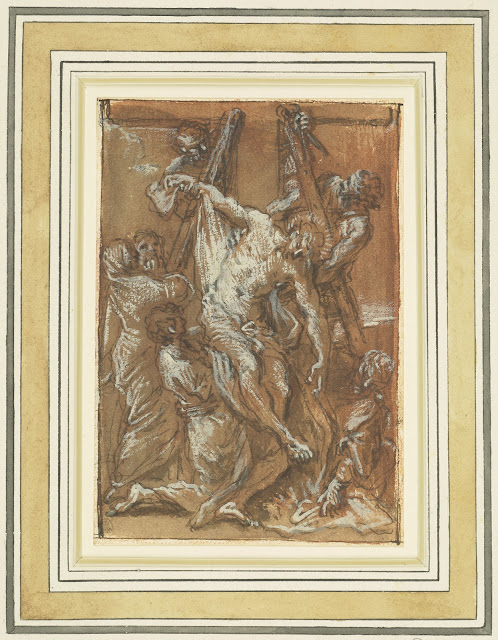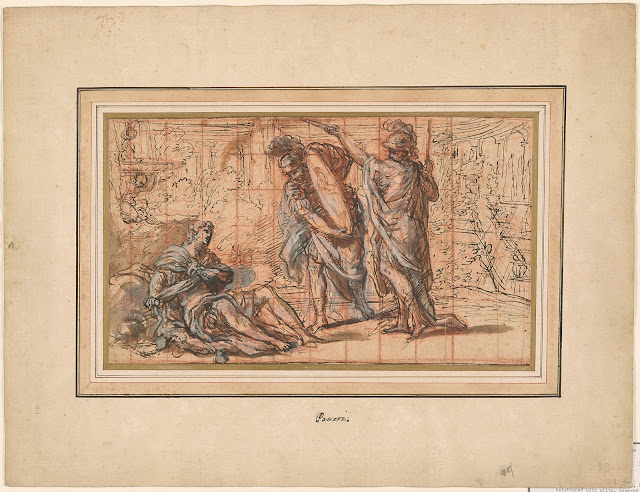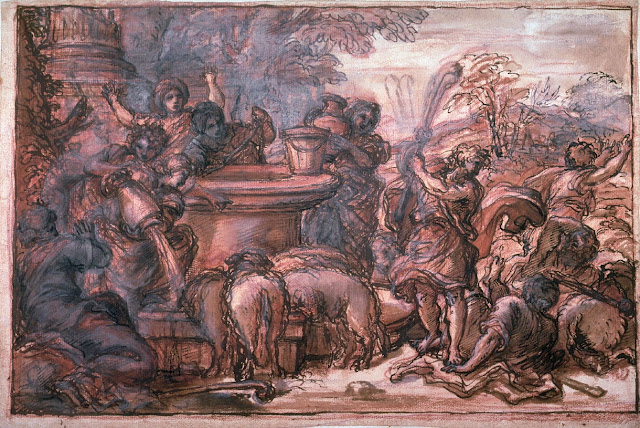| Agostino Masucci Portrait of architect Filippo Juvarra before 1736 oil on canvas Accademia di San Luca, Rome |
 |
| Agostino Masucci Portrait of Francisco Pescatori Baroni Mastigoli y Pasqual ca. 1740-50 oil on canvas private collection |
 |
| Agostino Masucci Portrait of Cardinal Niccolò del Giudice before 1743 oil on canvas private collection |
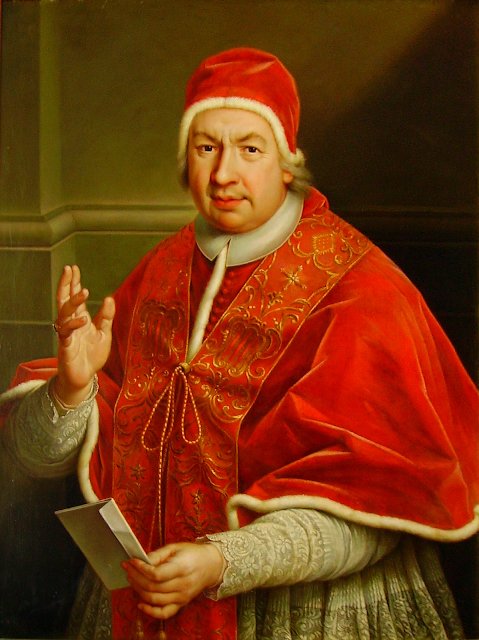 |
| Agostino Masucci Portrait of Pope Benedict XIV ca. 1743-58 oil on canvas Royal Castle, Warsaw |
"Born in 1691, Agostino Masucci was supposedly Carlo Maratti's last pupil, though on the basis of chronology he could have studied with him only briefly. Masucci's altarpieces are clear, cool and cultivated in style. His painterly technique is smooth as porcelain; his compositions are pleasant, though thoroughly conventional. In his Madonna paintings he imitated his master with only limited success. His portraits are more significant; in his own time he was considered to be Maratti's legitimate heir in this field."
– Hermann Voss, from Baroque Painting in Rome (1925), revised and translated by Thomas Pelzel (San Francisco: Alan Wofsy, 1997)
 |
| Agostino Masucci The Madonna with the Seven Founders of the Servite Order ca. 1728 oil on canvas Art Institute of Chicago |
 |
| Agostino Masucci Solemnisation of the Marriage of James Stuart, the Old Pretender, and Maria Clementina Sobieska in Rome ca. 1735 oil on canvas National Galleries of Scotland |
 |
| attributed to Agostino Masucci St Casimir before 1758 oil on copper Royal Castle, Warsaw |
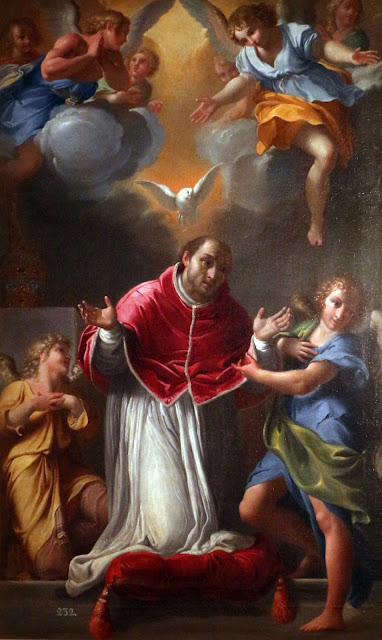 |
| Agostino Masucci St Gregory the Great in Prayer ca. 1730-35 oil on canvas Fondazione Cavallini Sgarbi, Ferrara |
 |
| Agostino Masucci Studies for the Head of St Peter, and Sketch of a Prophet before 1758 drawing private collection |
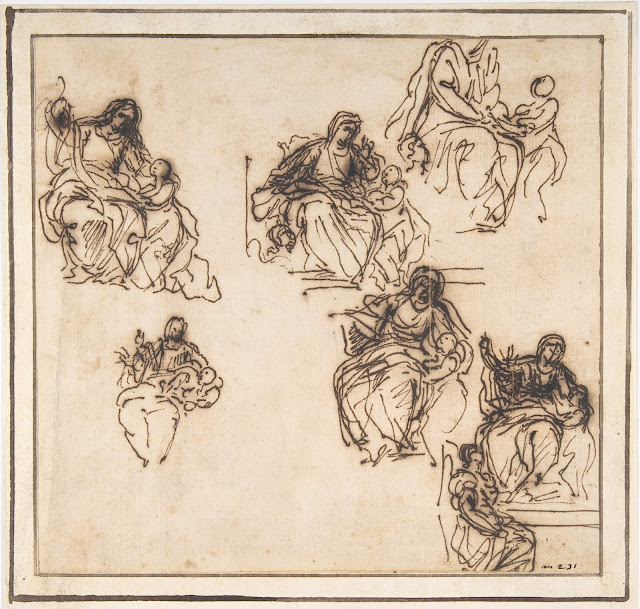 |
| Agostino Masucci Studies for The Education of the Virgin before 1758 drawing Metropolitan Museum of Art, New York |
 |
| Agostino Masucci Assumption of the Virgin ca. 1710-25 drawing Museo del Prado, Madrid |
 |
| Agostino Masucci The Continence of Scipio before 1758 drawing private collection |
 |
| Agostino Masucci Studies for the head of Pope Benedict XIII and Sketch for an Altarpiece ca. 1724-30 drawing National Gallery of Canada |
 |
| Agostino Masucci Diana, a Nymph, and three Shepherds in a Landscape before 1758 drawing British Museum |








